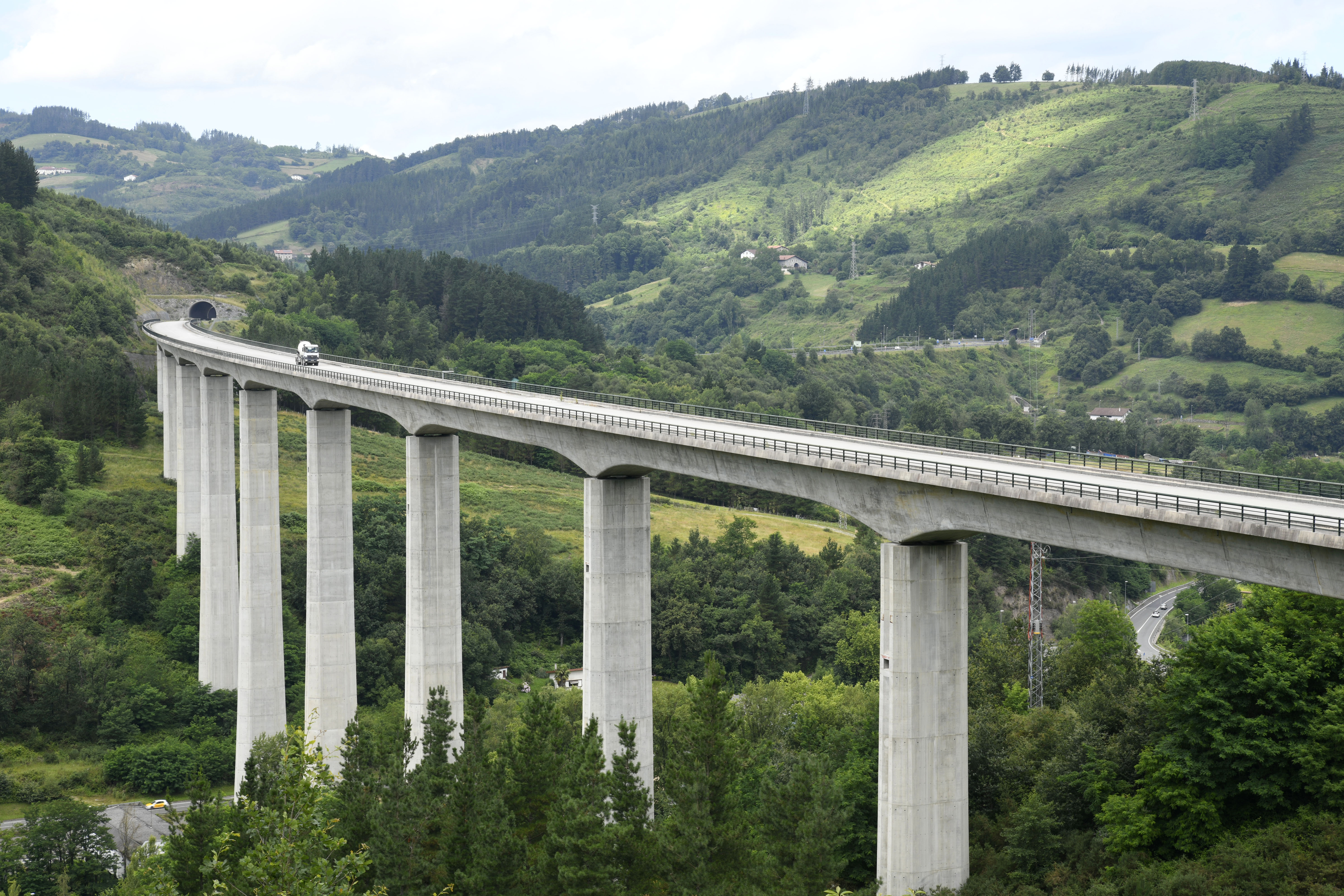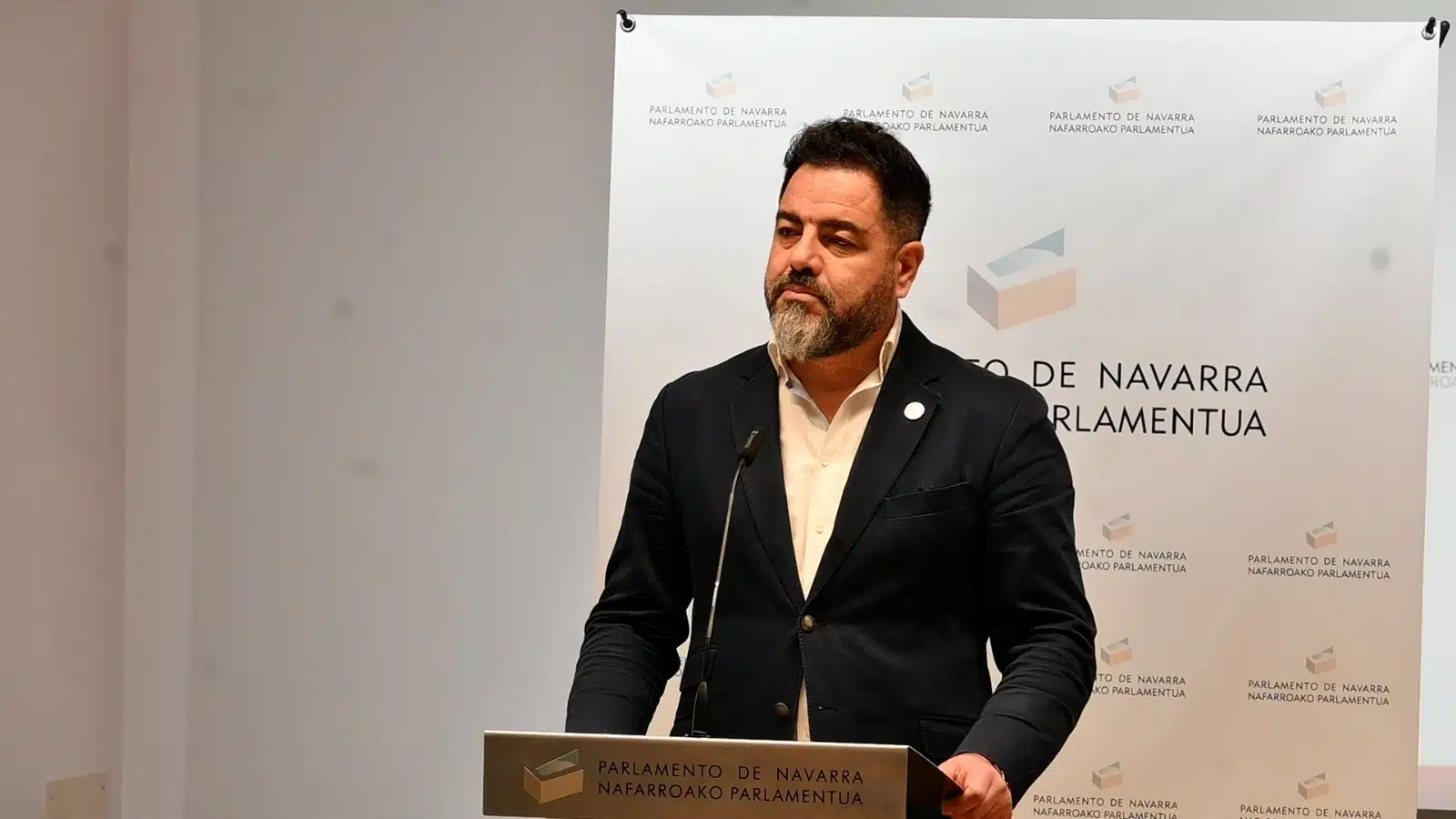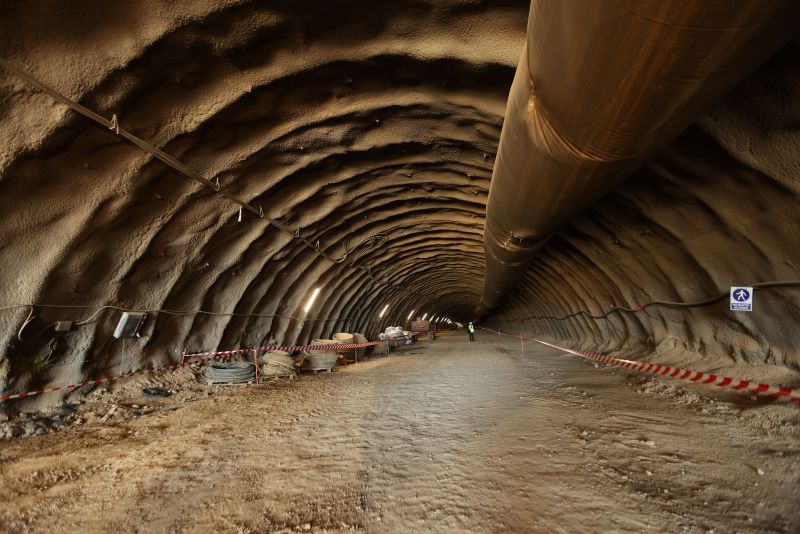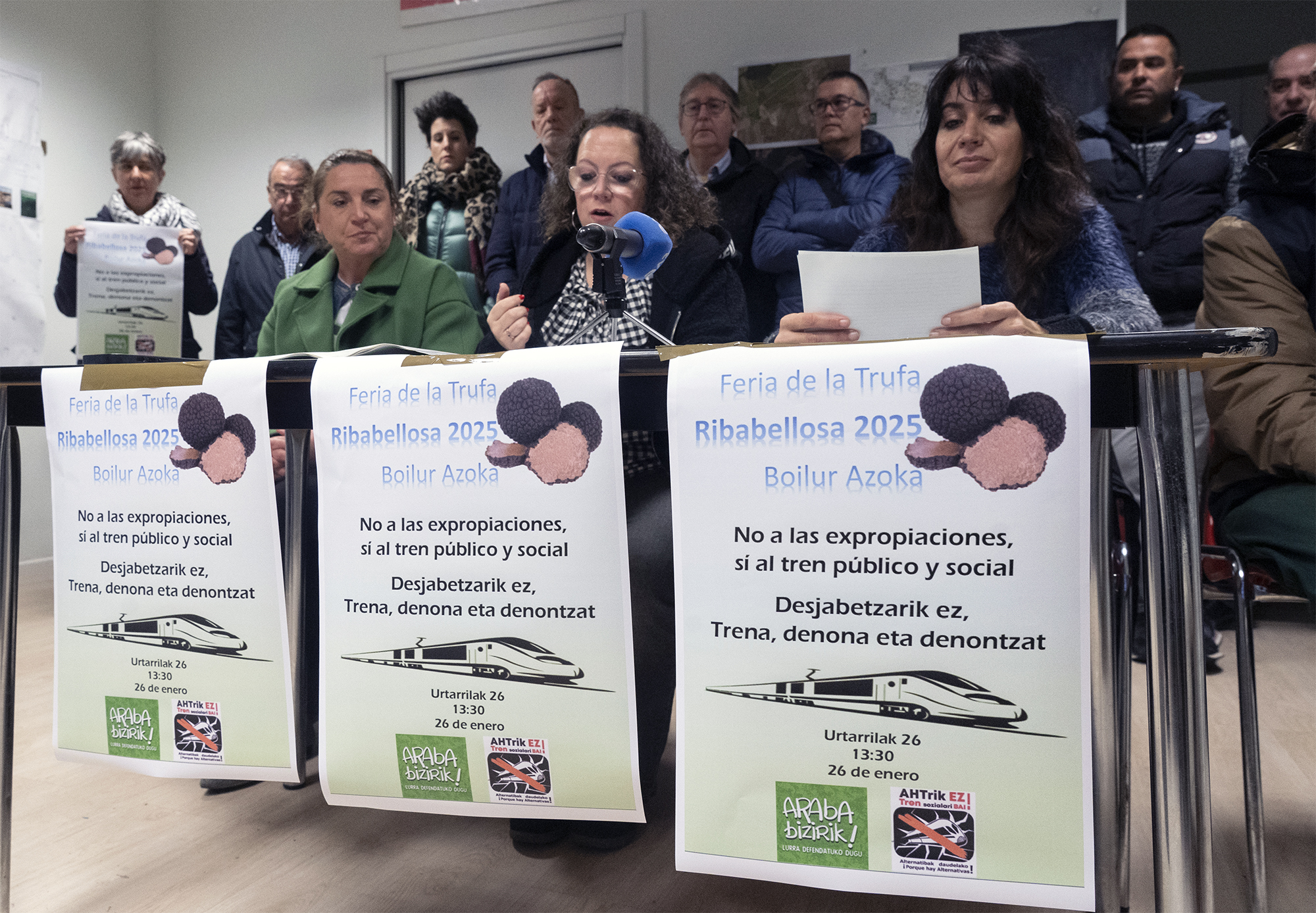TAV in Navarra: on the blind rail
- When will the works of the high-speed train (TAV) in Navarra end? Nobody knows for many reasons. The authorities are dropping the dates again and again, but increasingly less, more and more ridiculous. Small steps are being taken, however, 25 of the 213 kilometres planned are now over.

There are not too many new developments, but questions such as the train station of the Pamplona district of Etxabakoitz and the project of urbanization are gradually taking shape. The fast train transforms what it catches into a large or giant, whether bridge, tunnel, viaduct or neighborhood, and Etxabakoitz is no exception: Construction of 10,000 new homes is planned. Below we will explain the characteristics of the new station.
If you talk a lot about Etxabakoitz, it is no longer one of the major trouble spots. Although knots have been numerous over the past 20 years, the main dispute is now in the final section of the corridor: How will the TAV of Navarra finally be connected with the and? It should also be mentioned that the project is already officially known as high-performance trains, as it covers the transport of goods as well as passengers.
The link is a hare that
jumps periodically to the present day both from Vitoria and from Ezkio, and on the horizon of the municipal and foral elections of 2023, it now emerges strong again in Navarre politics. In the internal atmosphere of the Government of Navarra it is also one of the most agile issues. Infrastructure, both the project and the financing, is the responsibility of the Government of Spain and, being much cheaper, at the moment it prefers the link of Vitoria. The endless tunnel under Aralar to reach Ezkio vibrates in the treasury of the Ministry of Development.
The governments of Pamplona, Vitoria-Gasteiz and Madrid met before the summer, therefore and with great caution, but the meeting was delayed and will eventually meet after the summer. For UPN it is a good opportunity to fire with these splinters and face President María Chivite. Geroa Bai shakes the issue from within the government. Both forces agree that the link should be made from Ezkio or from Vitoria “which would exclude Navarra from the European rail corridor”. In addition, Senator Geroa Bai, Koldo Martínez, and UPN chief Javier Esparza, and from within or outside the government, oppose the PSN that is in doubt.
.jpg)
Confusion is no wonder. When PP Promotion Minister Iñigo de la Serna was in Pamplona in 2018, the PP announced that he preferred the link of Vitoria. Javier Esparza was still the head of the opposition to the government of Uxue Barkosen, but he said nothing. The PSN also saw Vitoria with good eyes. The two forces, on the other hand, primed Ezkio’s choice in the 2019 election programs, as Geroa Bai has always done.
Despite everything, the Spanish Government, led by the Socialists, confirmed the election of Vitoria in the spring, although it clearly stressed that nothing had yet been decided. Rejecting the electoral program, on this occasion the PSN mentions that it does not see the option of Vitoria, and the Territorial Cohesion Council, Bernardo Ciriza, insists that a connection is indifferent, “the important thing is to do”.
If we look at the Aralar Numbers
in a 21-kilometer tunnel, the reasons for the Madrid Government, which has to pay for the infrastructure, are better understood. Ezkio's link is four times more expensive than Vitoria's: The 55 kilometres of Ezkio would cost EUR 2,061 million and the 75 kilometres of Vitoria-Gasteiz EUR 704 million. In other words, building a kilometer in Ezkio costs 37.4 million euros and in Vitoria 9.4 million. The reasons are mainly in tunnels, in the Ezkio tunnel 30 kilometres to cross under the Aralar range. One of them is 21 kilometres, the largest of all times in the Basque Country and the second in the State (the longest is the Guadarrama tunnel, 58 kilometres).
According to Koldo Martínez, at the end of July, the Ezkio route would be much more expensive, but its environmental impact would be smaller, as most of the route would take place in tunnels. The senator suggests that tunnels have no environmental influence, but the vision of many of those engaged in environmental and environmental surveillance is very different. An example of this is that in 2016 the Atlas Global Environmental Justice Group of the Autonomous University of Barcelona (ICTA) conducted a study with the most harmful environmental projects in the world. In the ranking of ten, the fifth most damaging is the 57 kilometer tunnel that Turin (Italy) and Lyon (France) join with the fast train and cross the Alps underground. The work affects 112 municipalities, the vast majority are against and in the last 30 years thousands of citizens have known the fight against the project.
In any case, in addition to the environmental and budgetary impact, there are other players competing for prioritizing one or the other. According to some experts, the Bergara link linking the three branches of the corridor of the Basque Country is one of the focal points of the issue. This link will be saturated and will reduce the traffic going through Navarre, while if it moved around Ezkio it would connect directly with Europe. Moreover, if it were carried out from Vitoria, the long-term European rail flow would be easier to advance from Miranda de Ebro and Logroño. However, supporters of the Vitoria-Gasteiz option believe that it does not make sense and that this route would allow a better connection with Santander, El Ferrol, Lisbon or Porto.
Among the parliamentary parties Ahal Duguk, Ezkerra and EH Bildu have shown their opposition to the project. EH Bildu calls for an analysis of the project moratorium in the Foral Parliament in August. It considers that these investments have no meaning or future and should be directed towards social objectives, even more so in the current crisis. He has also stressed that this train model is not going to bring goods, although that is sold, and it has been shown by the Milan-Vitoria line, where it was announced that it had transported goods, but in the end it will only bring passengers.
.jpg)
Etxabakoitz It
has taken twenty years to reach agreements and finally, in order not to physically divide the neighborhood into two, the train will reach Etxabakoitz in a false tunnel of one kilometer. In the last decade UPN planned the construction of 9,000 housing units in the neighborhood, with the sale of which it intended to finance part of the works of the TAV of Navarra. In addition, any reform in the neighborhood has been linked to the station project until last February, when the consortium managing the Etxabakoitz station project disconnects the development of the neighborhood with the train station. In any case, the current project envisages the construction of more than 10,000 dwellings in a district where some 5,300 people currently live. Half will be official protection and the other half will be free. In 2012 the House of Auditors of Navarra warned that 9,000 households could have been registered, especially in the face of the 2007-2008 crisis and the impact of the housing bubble explosion on the population. Most of us probably see images of the hard evictions they suffered at the time.
At the request of Left-Ezkerra, the House of Auditors issued in 2016 a report by the Navarra part of the TAV, which concluded that “it was designed when we were in another economic situation” and that “it has now become obsolete”, summarised in the mouth of Asun Olaetxea, president of the House of Cuentas.Segun the report, “the design is not defined and no alternative” has been presented. At that time, the authorities talked about the Basque society coming out of the harsh crisis, but they could hardly convince the little that COVID-19, war and energy scarcity were going to bring another breeding ground. The forecasts for the hot fall have become the bread of every day, and the corridor’s works continue, following a plan designed by the authorities at a time when the expenditure scare was the first.
The station will reach Etxabakoitz, but the project of urbanization of the corridor environment will also affect the Zizur City Hall and the St. George's Street district, from where the new railway will be built to Zuasti. Provision has been made for 14,600 parking spaces and a new exhibition fair. The full details of the resort and urbanization project can be found in Obraspublicas.navarra.es.
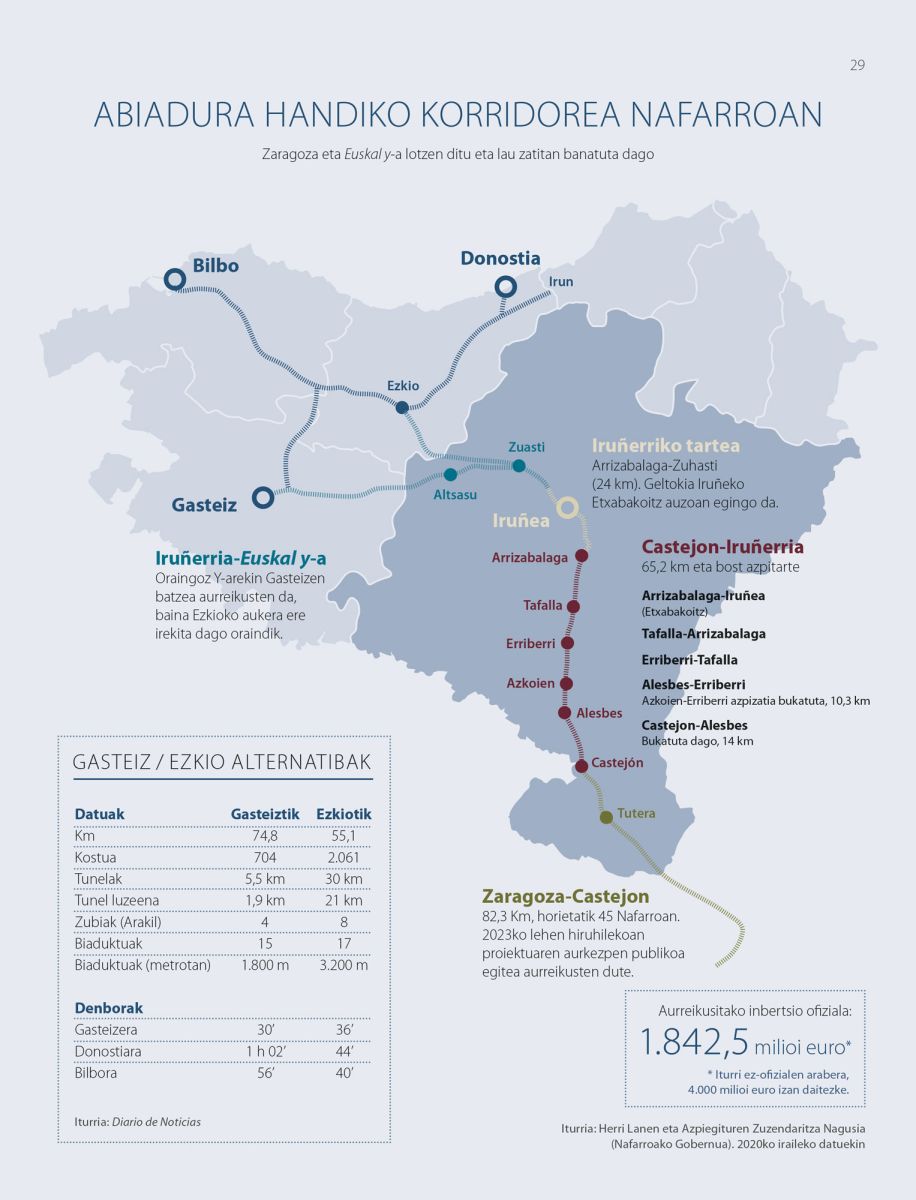
Most of the project is in the air With what has been
read so far the reader may think that the TAV project of Navarra is alive, but the reality is far from that situation. Most are still to be done, due to continuing funding problems and the confusion of the future landscape. The Navarro corridor is not one of the priorities of the Spanish Government, nor does it seem that it will exist before the black fogs announced.
When in 2010 the governments of Spain and Navarre signed a pact to push the project forward, Minister José Blanco determined that the train would be in Pamplona by 2015. President Yolanda Barcina was not going to stay behind and, despite the size of the crisis, confirmed that the train would be in Pamplona in 2016. After the crisis and the new panorama, PP minister Iñigo de la Serna, on his visit to Pamplona in 2017, said the train would reach the City Chief in 2023. And, even if it is not possible for 2023, to be for 2026, as pointed out by the Navarro councillor Bernardo Ciriza in November 2021: “In Arrizabalaga-Castejón we will do it in 28 minutes.” We do not have much to know about the construction of the railways to see that what the advisor said is not being complied with at all. The issue of putting an end date would take a long time to come, but it is not easy to understand the authorities' fondness for putting them in, which show the worst view of electoral logic and politics.
The reality is very crude. For the first quarter of 2023, the project for the section between Zaragoza and Castejón will be released to the public. So far 25 kilometres have been travelled between Castejón and Olite, one of the most tender and the works are being carried out mainly between Olite and Castejón. The works have also been carried out between Olite and Tafalla, but rather superficial. It is said that the hardest works of this section begin in Tafalla with tunnels under the Monte Plano and the Canal de Navarra of 1,926 and 586 meters respectively. In the third part (Cuenca de Pamplona) and in the fourth part (Link with the Basque Country), they are still under study, and in the latter part it has not been decided whether the train will be travelling in Vitoria or Ezkio.
.jpg)
Lack of transparency
The Spanish Government cannot cope with investment. The TAV network has been in operation in Spain for 30 years, and 3,086 kilometres of railway network have been built in this section, with an expenditure of EUR 56,000 million and the second largest global network. But it is becoming more and more difficult to move forward with the Pharaonic network planned for the entire state, and to make it more profitable.
It is not easy to move through the APR’s investment and budget network, it is usually played with little transparency, or simply there is no data yet. The report of the Navarra House of Auditors of 2016, cited above, expressly states that among the obstacles encountered by the study was the request for information on the investments made by the House to the public company Adif-Alta Velocity, without its response. That also gives the measure of the lack of transparency. Another example: A report for the public debate on the project, which is still in the network, was produced by the Barkas government in 2017, but in which the reader will not find the least investment reference.
As for the sosos, it is said that in the CAV they can spend EUR 6 billion to do the Basque and Basque – some even EUR 10 billion – and in Navarra between EUR 3 billion and 4 billion. With the degree of detail of this last project, the official budget could be around EUR 2.5 billion, but only EUR 1.842 million is quoted on the public works website of Navarra. According to Subai Fundazioa, it would be €4.470 million (with 2013 data). In any case, how can we know whether the Ezkio branch is not connected with the and is EUR 1.5 billion more expensive than that of Vitoria?
In any case, according to the report prepared by Airef, the Spanish Independent Tax Liability Authority, in 2020, 58% of the investment of the Basque and Navarro corridor remained outstanding, 96.2% of the investment. How much progress has been made since then in Navarre? It seems that no progress has been made. This year, last April, the Minister of Transport, Raquel Sánchez, was also in Pamplona and with the investment data provided by her, A, who follows these topics in the News Journal. Irisarri reported that the Spanish Government has not reached 5% of the total investment in the corridor. It is not far from the data of Airef. To guide the situation, EUR 140 million of European Next Generation funds will be allocated to them, and under the conditions laid down, must be spent before 2026.
But more than just a boost, the EU has been slowing down APR investments in recent years. In 2018, the European Court of Auditors made a strong criticism of the high-speed network that the EU has built in recent decades: it does not structure the EU, it is expensive, it does not respect the planned speed and it does not believe that the objective is met. Presentation of the report by Oskar Herics of the European Court. Fourteen lines built in the EU were analysed, four of them between states.
There are also criticisms from more official places, such as the interior of the PSOE or some sectors of the Spanish right, especially since the topic of “pure Spain” has acquired relevance. In January 2020, Pedro Sánchez Minister of Transport, José Luis Abalos, said: “We are going to drastically change the direction of our railway investments, which have been based for too many years on high speed.” Later, when Sánchez ceased, it was commented that this position could influence Moncloa’s decision.
.jpg)
Connecting Europe to Europe for TAV
supporters has been one of the main reasons for boosting this infrastructure. What has happened so far? The French Government temporarily suspended the TAV project between Bordeaux and Baiona, and was not expected to resume it until the 2030 decade. Instead, Paris has changed its mind and wants to start the Bordele-Daque-Baiona-Pau line in 2024 to be completed by 2037.
The main knot is in funding. Fixed by itself, Paris would assume 40%, local authorities 40% and the EU 20%. This is an investment of EUR 305 million, 130 of which should be paid from the banks of the Basque School. Last December, however, the Basque College refused by an absolute majority to finance the infrastructure. It is not the only one, Lot and Garona, and the departments of Gironde have also refused. The President of the Atlantic Pyrenees, Jean-Jacques Lasser, has announced that the Pau organisation agrees with the project, but not with Paris having consolidated the investment on its own, so I would like to speak to the Macron government. If the Navarro Corridor is in a narrow state, so today the European connection that praises the TAV fans of Navarra is no better.
This TAV project has been strongly opposed in Navarra since the first official reports of the corridor began in 1987, but until 2017 it had no concrete alternative. In that year, Subai Erakuntza presented the Public and Social Train project, increasing the current speed, which would allow transportation, mainly taking advantage of the current railway infrastructure and with the objective of structuring the territory. It was not what they would want, but it would have served as an alternative, until another more sustainable model could be channelled. It would be an investment of EUR 2 billion, half the current one. At the moment, the institutions and the high-speed sector have ignored it, and they are as unmistakable as water and oil.
At a time when energy consumption is going to be very low, our governments continue to chain an obsolete transport model with an energy rich past. Giving more importance to speed than sustainability, damaging the territorial cohesion of Navarre, and also unable to finance the corridor.
Do not look for this connection from Ezkio or Altsasu, let alone crossing the Ebro River through Castejón. The connection, or rather the connections, between the Basque Y and the AVE of Navarre is already a reality. It is these links in the plural that should concern us and... [+]
EAE, Akitania Berria eta Nafarroak osatutako euroeskualdearen batzarra egin dute Iruñean martxoaren 25ean. AHT izan dute topaketaren ondoko agerraldiko aipagai nagusien artean eta Akitania Berriko ardatza Hego Euskal Herriko trenbidearekin lotzeko konpromiso politikoa... [+]
Datorren udaberrian, Stop AHT Zundaketak ekimenak bi urte beteko ditu. 2023ko maiatzean, ADIFek Itza, Sakana eta Goierriko udalei jakinarazi zien zundaketa geoteknikoak eta beste jarduketa batzuk egingo zituela AHTaren Nafarroako korridorea Euskal Y-arekin lotzeko alternatibak... [+]
Josu Estarrona EH Bilduko Arabako senatariak egindako galderari erantzun dio Espainiako Sustapen Ministerioak, eta hor berretsi du Ezkioko aukera zailtasunez beteta dagoela.
"Gasteiztik egin ezean, ez da egingo", adierazi du PSNren bozeramaile Ramón Alzorrizek. Kontra azaldu dira Geroa Bai, UPN eta PP.
In recent weeks we have been reading "proposals" for the recovery of the railway line Castec-Soria and the maintenance of the Tudela train station in its current location, or for the construction of a new high-speed station outside the urban area with the excuse of the supposed... [+]









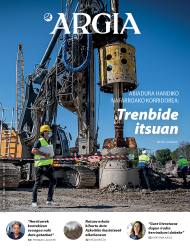

.jpg)

